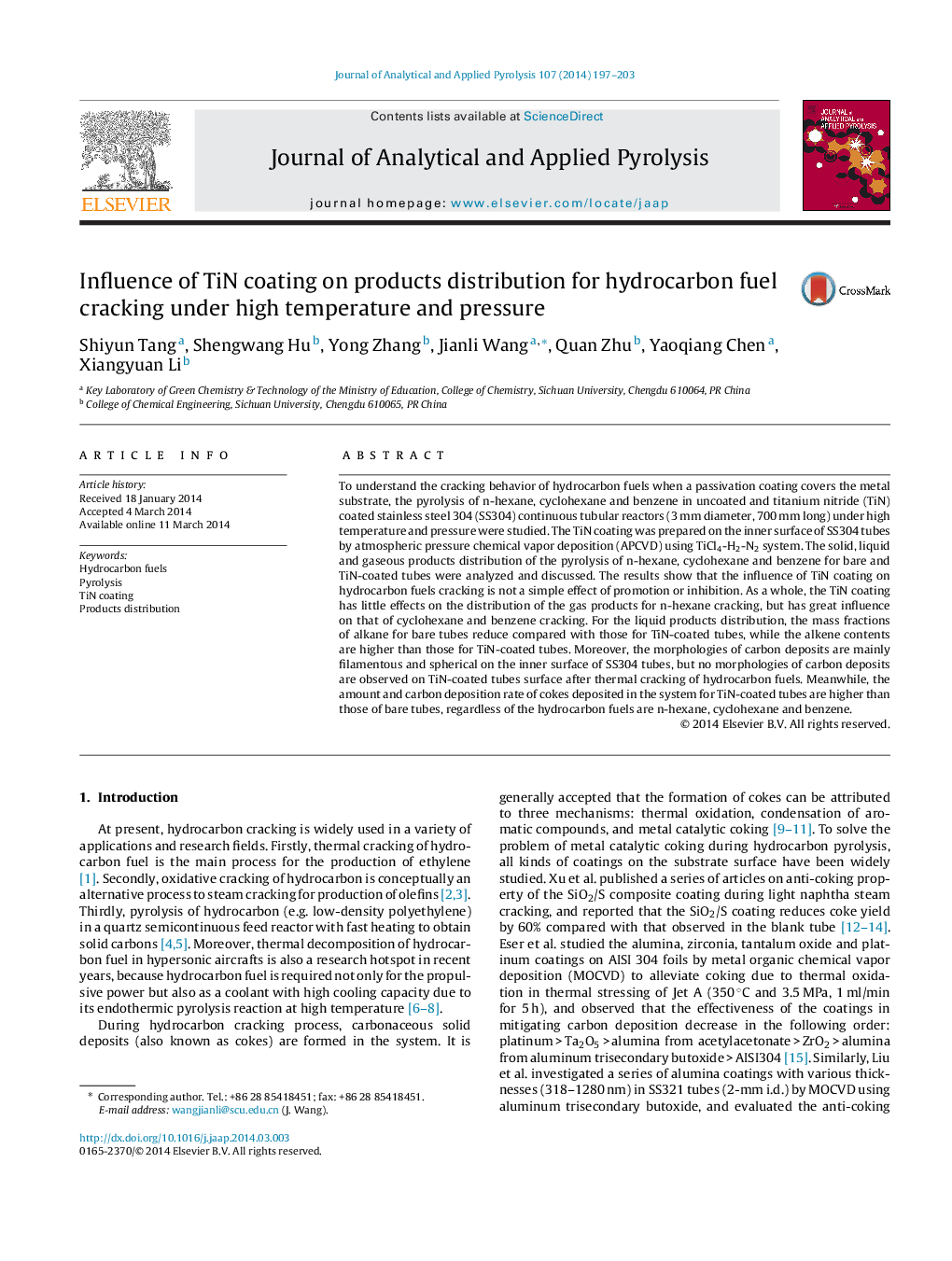| Article ID | Journal | Published Year | Pages | File Type |
|---|---|---|---|---|
| 1198304 | Journal of Analytical and Applied Pyrolysis | 2014 | 7 Pages |
•The chemical vapor deposition TiN coating shows a good ant-coking performance.•The products distribution of the pyrolysis of fuels is influenced by TiN coating.•The influence of TiN on cracking behavior is not effect of promotion or inhibition.•The solid, liquid and gaseous products which formed extreme condition were studied.
To understand the cracking behavior of hydrocarbon fuels when a passivation coating covers the metal substrate, the pyrolysis of n-hexane, cyclohexane and benzene in uncoated and titanium nitride (TiN) coated stainless steel 304 (SS304) continuous tubular reactors (3 mm diameter, 700 mm long) under high temperature and pressure were studied. The TiN coating was prepared on the inner surface of SS304 tubes by atmospheric pressure chemical vapor deposition (APCVD) using TiCl4-H2-N2 system. The solid, liquid and gaseous products distribution of the pyrolysis of n-hexane, cyclohexane and benzene for bare and TiN-coated tubes were analyzed and discussed. The results show that the influence of TiN coating on hydrocarbon fuels cracking is not a simple effect of promotion or inhibition. As a whole, the TiN coating has little effects on the distribution of the gas products for n-hexane cracking, but has great influence on that of cyclohexane and benzene cracking. For the liquid products distribution, the mass fractions of alkane for bare tubes reduce compared with those for TiN-coated tubes, while the alkene contents are higher than those for TiN-coated tubes. Moreover, the morphologies of carbon deposits are mainly filamentous and spherical on the inner surface of SS304 tubes, but no morphologies of carbon deposits are observed on TiN-coated tubes surface after thermal cracking of hydrocarbon fuels. Meanwhile, the amount and carbon deposition rate of cokes deposited in the system for TiN-coated tubes are higher than those of bare tubes, regardless of the hydrocarbon fuels are n-hexane, cyclohexane and benzene.
